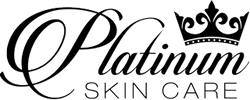
Understanding Jessners
Jessners is a unique blend comprising 14% Salicylic acid, 14% Lactic acid, and 14% Resorcinol. This potent concoction is particularly effective for those with oily or blemish-prone skin. Moreover, the presence of Resorcinol makes it a viable option for addressing pigmentation issues.
Meet TCA
Trichloroacetic acid, or TCA, is a versatile acid with a broad spectrum of benefits. It stands out as a solution for acne, hyperpigmentation, melasma, wrinkles, and various types of scarring. The strength of TCA can be tailored to your needs by adjusting the number of layers applied.
Layering the Peels
Both Jessners and TCA peels are applied in layers, allowing for a high degree of customization. Fewer layers result in a lighter peel, while additional layers yield a deeper one. The similarity in application method often sparks interest in combining these two acids, which can indeed have synergistic effects.
When used as a pre-treatment, Jessners paves the way for TCA by dissolving the tougher outer skin layers. This dynamic duo is especially effective for individuals with oilier skin types, as excess oil can hinder acid penetration and lead to uneven results.
Peel with Caution
It's important to note that combining these acids can result in a deeper peel. If your skin is on the drier side or thinning, a Jessners prep may not be suitable. This technique is considered advanced and should only be considered after independent use of each acid for a full peel series, typically consisting of 6-8 peels.
Preparing Your Skin for a Chemical Peel
Before indulging in a medium-depth peel, ensure your skin is healthy and well-prepared. Consider using a product like our Retinol Molecular Serum or prescription Tretinoin to even out your skin. Another alternative would be an acid serum like our Serum 15 or Serum 30. Avoid using face scrubs, as they can lead to uneven texture.
For those with melanin-rich skin, using a melanin inhibitor like our Fade Bright for at least two weeks before a TCA peel can help prevent Post Inflammatory Hyperpigmentation. Protect your skin daily with antioxidants such as Vitamin C and wear sunscreen with an SPF of at least 30, preferably higher.
Choosing the Right Peel Percentage
Jessners comes in a standard 14/14/14 percentage, offering no need for choice. TCA, on the other hand, provides options of 7%, 13%, 20%, and 30%. Starting with 13% TCA is typical, with most users applying 2-5 layers for a satisfying peel. When incorporating Jessners, remember not to exceed the recommended 5 layers in total.
Preparing for the Peel
Before applying any acid peel, it's essential to be aware of some precautions:
-
If using Vitamin A products, cease usage 5 days prior to the peel if you have sensitive skin.
-
Stronger acids like TCA can cause skin discoloration, making a melanin inhibitor advisable.
-
Avoid using abrasive scrubs or needling techniques a week before or after a peel. Be done flaking 100% before you start needling again.
-
Never apply a peel to tanned skin. There is excess melanin and that can lead to spotting.
-
Do not use TCA if you are pregnant.
-
Avoid application to freshly waxed or shaved skin within 24 hours.
-
TCA should not be used if you've taken Accutane in the past year or have active herpes simplex.
The Peel Application Process
For those with extremely sensitive skin, numbing agents like "caine" products can be used before the chemical peel. Cleanse your skin thoroughly but avoid hydrating cleansers. The following steps are crucial:
-
Apply Prep B solution or 90% alcohol evenly to the treatment areas.
-
Apply Jessners, with one or two layers depending on your desired peel depth.
-
Wait for 5 minutes.
-
Apply TCA, with one to three layers as needed.
-
Wait for 5 minutes again.
-
Ensure that your gauze pad is adequately damp but not dripping, especially when applying TCA, as excessive moisture can result in a deeper peel than intended.
Post-Peel Care
After the peel, you may experience skin blanching or frosting, which is normal. Any frosting or white speckling can be wiped off and is nothing to fear. Your skin will peel even if you don't observe frosting.
Following the peel, apply targeted treatments like Growth Factors, copper, or retinol to enhance skin health and penetration. For those with hyperpigmentation or darker skin, using Fade Bright is recommended. Use sunscreen daily with an SPF of at least 30, preferably higher.
If you like, you can apply the emu oil or our Essentials 99% Organic Healing Oil on top. Both are very healing and anti-inflammatory. If you don’t have either of those, any other calming or gentle cream or oil should be just fine.
FAQs
Here are answers to some frequently asked questions about this acid combination:
1. How long will my face be white or pink?
Discoloration typically subsides within an hour after peeling, and any remaining pinkness is normal and temporary.
2. Can I experience swelling after a deeper peel?
Swelling may occur, especially with three or more layers. A cool compress can help, and the swelling usually diminishes within a few hours.
3. Can pigmentation become darker?
Yes, pigmented areas may appear darker temporarily due to pigment rising to the surface. This is a positive sign, as the dark spots will eventually flake off.
4. How long does it take for the skin to peel?
Facial skin usually starts to peel around day 3-4 after the peel, while neck and chest areas may take longer, starting around day 6-10.
5. Can I expedite the peeling process?
Applying the Luminosity Method, an enzyme mask, or retinol immediately after the peel and in the days following can help speed up the peeling process.
6. How often can I do these peels?
The frequency of peels depends on the percentage and number of layers used. Generally, if applying this Advanced Method, one peel per month is a reasonable guideline.
In conclusion, the combination of Jessners and TCA peels is a potent strategy for achieving vibrant, clear skin. However, it should be approached with caution and knowledge. When executed correctly, this method can yield outstanding results and provide the path to your best skin ever. For further guidance or questions about acid peels, don't hesitate to reach out to us during our office hours. Wishing you a wonderful journey towards healthier, more radiant skin!



